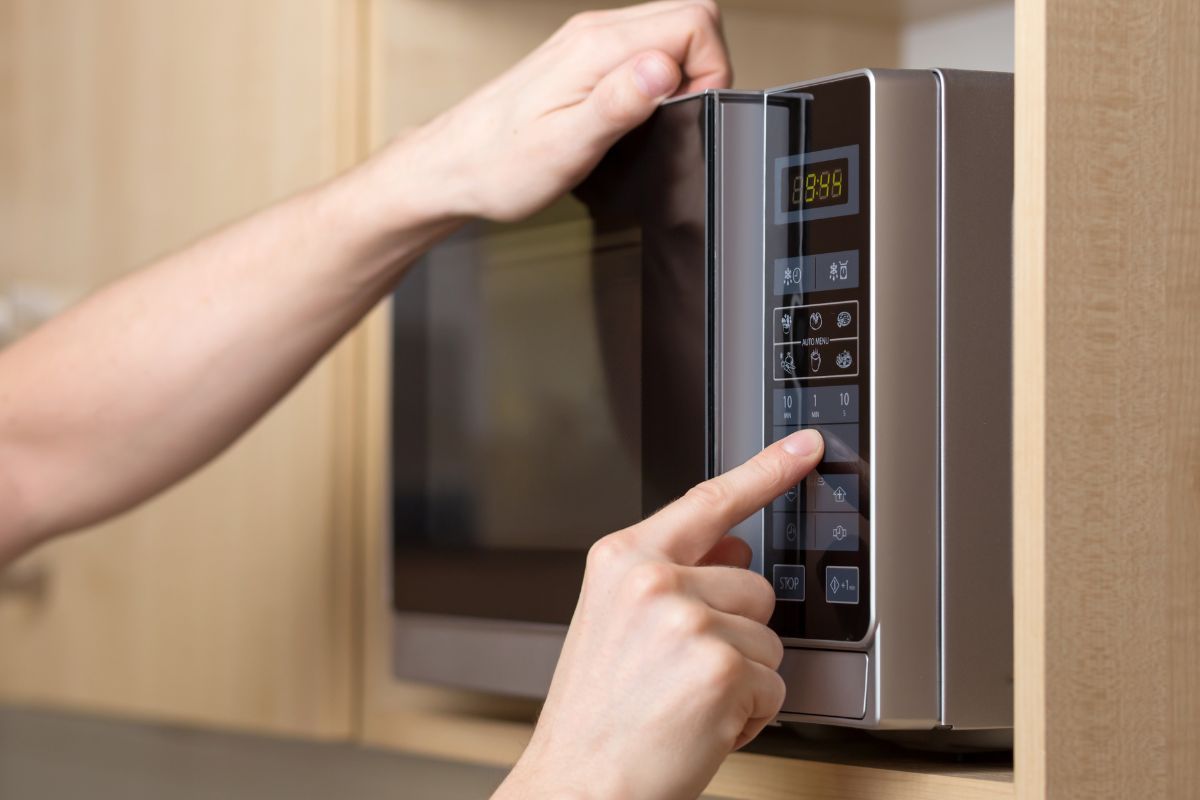Show table of content Hide table of content
Most of us routinely heat water in our microwaves without a second thought. It’s quick, convenient, and part of our daily habits. Yet this seemingly innocent action harbors a hidden danger that few recognize: superheating. This phenomenon can transform a simple cup of water into a scalding hazard in mere seconds, causing serious burns and injuries.
The invisible danger of superheated water
Unlike conventional stovetops, microwaves heat liquids using electromagnetic waves that excite water molecules. This creates an uneven heating pattern where parts of the liquid can exceed 100°C without showing any visible signs of boiling. Scientists call this dangerous state “superheating,” and it affects thousands of households daily without their knowledge.
The Food and Drug Administration (FDA) has issued warnings about this phenomenon after documenting numerous cases of severe burns. The danger lies in what happens next: when the superheated water is disturbed—by adding a tea bag, stirring with a spoon, or even just moving the cup—it can erupt violently, causing scalding burns to hands, arms, and faces.
Home This fly trap is truly effective – just two kitchen products are all you need.
The physics behind this reaction is straightforward but often overlooked. Water requires nucleation sites—tiny irregularities or imperfections—to form bubbles and boil normally. Smooth containers like glass mugs provide few such sites, allowing water to remain deceivingly calm while reaching dangerous temperatures.
This issue particularly affects children and teenagers who might be less cautious when preparing hot beverages. While some parents focus on teaching active habits like treadmill workouts for health, many overlook kitchen safety education about these less obvious hazards.
Why microwave heating differs from conventional methods
Traditional heating methods create temperature gradients that naturally promote convection and visible boiling. The bottom of a pot on a stove gets hottest first, creating bubbles that rise and signal when water has reached boiling point. This visual indicator is crucial for safety and has been ingrained in our cooking instincts for generations.
Microwaves function fundamentally differently. They penetrate the liquid and heat it from within by agitating water molecules directly. This molecular-level heating can create isolated pockets of extreme temperature without disturbing the surface tension enough to trigger visible boiling. The result is water that appears perfectly calm despite being dangerously overheated.
Home Few people know it: putting a coin in the freezer is one of the best tricks to avoid problems.
Ceramic and glass containers, ironically chosen for their microwave safety, actually compound this problem. These materials are excellent insulators that maintain temperature differentials rather than distributing heat evenly. They also provide the smooth, imperfection-free surfaces that inhibit bubble formation—the perfect conditions for superheating to occur.
Most microwave manufacturers include warnings about this phenomenon in their user manuals, but these cautions are frequently overlooked or forgotten. The absence of public awareness campaigns means many users remain unaware until they experience the frightening eruption firsthand.
Practical safeguards against superheating incidents
Prevention remains the best approach to microwave water safety. Health experts recommend several practical measures to disrupt the superheating process. First, never heat water for extended periods without interruption. Most superheating incidents occur after continuous heating beyond one minute.
Adding a non-metallic object like a wooden stirrer or even a used wooden chopstick to your cup before heating provides nucleation sites for bubbles to form. This simple step dramatically reduces superheating risk by allowing normal boiling to occur. Alternatively, adding substances like sugar, instant coffee, or even the seeds from strawberries provides the irregularities needed for safe boiling.
Container selection also matters significantly. Avoid extremely smooth vessels and never use containers with narrow openings that concentrate steam. Leave adequate headspace when filling cups or mugs, as this provides room for potential eruption without immediate overflow onto skin.
If you must heat pure water, employ the “time interval” technique—heating in 30-second increments with short rests between. This interruption helps equalize temperatures throughout the liquid and reduces superheating potential. After heating, wait 30 seconds before removing the container from the microwave, allowing any potential reaction to occur while the door provides a safety barrier.
Recognizing and responding to superheating accidents
Despite precautions, accidents may still occur. Knowing the warning signs can prevent serious injury. Be extremely cautious when liquid appears unusually still after microwave heating. Normal hot water typically shows minor movement or small bubbles forming at the edges. Completely motionless water despite extended heating time signals potential superheating.
If you suspect water might be superheated, avoid moving the container immediately. Instead, insert a long-handled metal spoon from a safe distance or place something like a sugar cube into the liquid using tongs. These actions will trigger any potential eruption while maintaining safe distance.
Home Why using the quick wash program on the washing machine is actually a bad idea.
For those unfortunate enough to experience scalding from superheated water, immediate first aid is crucial. Run cool (not cold) water over the affected area for at least 20 minutes. Remove clothing or jewelry from the burned area unless stuck to the skin, and avoid applying ointments, butter, or home remedies that may worsen tissue damage.
Medical attention becomes necessary for burns larger than three inches, or any burns on faces, hands, feet, genitals, or major joints. The FDA emphasizes that proper treatment within the first hours significantly impacts recovery outcomes.
The silent danger of superheated water reminds us that even the most routine kitchen tasks deserve attention and care. By understanding the science behind this phenomenon and implementing simple precautions, we can continue enjoying the convenience of microwave technology while protecting ourselves and our families from its hidden hazards.


